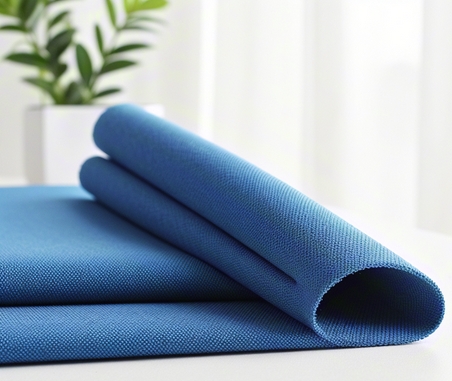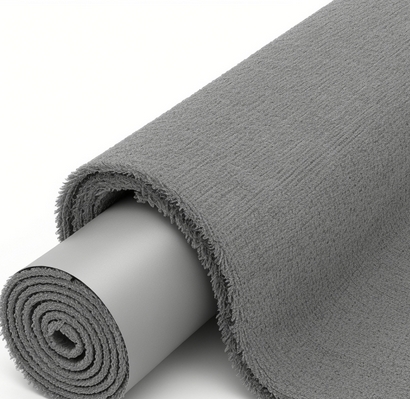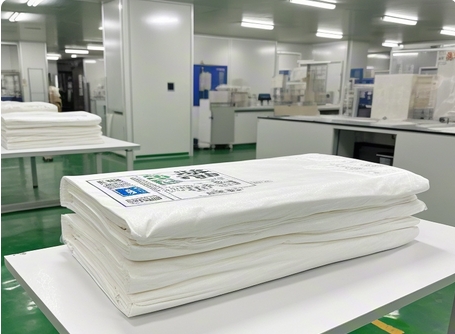Language

Dust-free cloth hierarchy system and application scenario depth analysis
[Cleanness Grading Standards and Technical Parameters] Dust-free cloth is divided into four categories according to ISO 14644-1 clean room standards: Class 1, Class 10, Class 100, Class 1000, and Class 1000. Among them, the allowable ≥0.5μm particles per cubic meter of Class 10 professional dust-free cloth should not exceed 352, which is equivalent to the operating room level cleanliness requirements. The classification is based on laser particle counter detection and is verified through the VDA 19.2 standard test process to ensure that the particle release amount of each dust-free cloth complies with industrial specifications.
[Multi-level product matrix analysis] The current dust-free cloth product system constructs a four-dimensional classification model according to application scenarios: 1. Basic type (10,000): Use polyester/cotton blending process, suitable for desktop cleaning and instrument surface maintenance in conventional environments 2. Reinforced type (10,000): Use melt blown ultrafine fiber technology, the fiber diameter is controlled below 3μm, which can effectively capture 98% of particles above 5μm 3. Precision type (100): A three-dimensional mesh structure made by electro spinning process, especially suitable for optical lens cleaning and precision instrument maintenance 4. Professional dust-free cloth (100): Use nonlevel island fiber material, and plasma surface treatment, and a single wipe residue can be wiped<0.1ng/cm² in the semiconductor wafer cleaning process.
[Empirical cross-industry application scenarios] Professional-grade dust-free cloth shows unique value in the field of cutting-edge manufacturing: - Semiconductor manufacturing: used in 12-inch wafer production line, combined with IPA solvent to achieve submicron-level pollutant removal - Aerospace: In the assembly process of satellite optical system, the surface resistance value of professional-grade dust-free cloth can be stably controlled in the range of 10^6-10^9Ω - Biopharmaceuticals: Sterile packaging dust-free cloth that meets the requirements of GMP A-level clean area, with bacteria retention rate as high as 99.99% - New energy field: The contact angle of professional-grade dust-free cloth in photovoltaic cell production is<15°, ensuring surface energy matching
[Full Life Cycle Management Technology] In order to maintain the best performance of dust-free cloth, it is recommended to adopt a three-level maintenance system: Pretreatment stage: Use reverse osmosis pure water for initial rinsing, and the water temperature is strictly controlled at 40±2℃ Cleaning procedure: Use neutral enzymatic cleaning agent, combined with ultrasonic cavitation technology to remove deep fiber particles drying specifications: Centrifugal dehydration in Class 100 clean environment to avoid deformation of fiber structure due to high temperature baking
It is worth noting that professional-grade dust-free cloth needs to be used with clean room special gloves. The physiological characteristics of human dandruff shed about 1 million particles per hour determine the necessity of double protection. In scenarios such as LCD panel manufacturing, professional-grade dust-free cloth and ionic air rods can form a complete electrostatic control solution, stabilizing the surface voltage within the ±50V safety threshold.
Guide to Use and Maintenance of Professional-grade Dust-Free Cloths
Scientific cleaning methods and precautions To ensure that professional-grade dust-free cloth maintains the best cleaning performance, it is recommended to choose a special detergent with neutral pH combined with warm water below 40℃ for cleaning.
Ultrasonic cleaning equipment is usually used in the industrial field, while centrifugal dehydrators are mostly used for standardized treatment in laboratory environments. Special care should be paid to avoid the use of chlorine-containing bleach or cationic softeners, which can destroy the fiber electrostatic adsorption properties of dust-free cloth.
Principles of classification management, different clean grade areas should strictly distinguish the use specifications of dust-free cloth: • Level 100 clean room: equipped with independent packaging 0.3μm filter-free cloth • Level 100 clean area: use professional dust-free cloth with anti-static coating • Ordinary working area: recyclable recycled dust-free cloth
The replacement cycle determination standard recommends establishing a visual detection mechanism, which should be replaced immediately when the following situations occur: 1) The fiber structure has broken or burrs 2) The surface resistance value exceeds 10^9Ω (according to ASTM D257 standard) 3) Repeated cleaning exceeds 20 cycles. Semiconductor manufacturing companies usually combine particle counter monitoring, and force scrapping when the particle release per unit area exceeds the ISO Class 5 standard.
Technology evolution and industry application Modern professional-grade dust-free cloth has developed composite structural designs, typical representatives such as sandwich microfiber cloth, whose cleaning efficiency is more than 60% higher than traditional products. In the field of biomedicine, dust-free cloth treated with gamma ray sterilization can achieve terminal cleaning of medical devices; the photovoltaic industry generally uses chemical corrosion-resistant polyester substrate dust-free cloth for silicon wafer surface treatment.
Tags:
RELATED RESOURCES

Unveiling the manufacturing process of cleanroom wipes: key technologies from ultrasonic edge sealin
As the core consumable in the field of precision manufacturing, dust-free cloth plays an irreplaceable role in......
More

Industrial Wipes Selection Guide: 10 Standards Analysis and Application Scenario Illustrations
In the field of industrial cleaning, the choice of professional wipe materials directly affects production eff......
More

Detailed explanation of dust-free cloth price and edge sealing process: How to choose the right equi
In the field of industrial cleanliness, the pricing mechanism of dust-free cloth as a key consumable involves ......
More

Comparison of straight-grained and mesh-grained structures of cleanroom wipes: Analysis of 3 major p
As the core consumable in the field of precision cleaning, dust-free cloth plays a key role in semiconductor m......
More
Related Products
Room 101, Building 1, Angeer Factory, No.4, Hetian Road, Shatian Community, Kengzi Street, Pingshan District, Shenzhen, Guangdong, P.R. China 518122
info@wipestar.com
+86-755-89616775
+86-755-89616773
Related Products
RELATED RESOURCES

Unveiling the manufacturing process of cleanroom wipes: key technologies from ultrasonic edge sealin
As the core consumable in the field of precision manufacturing, dust-free cloth plays an irreplaceable role in.........
More

Industrial Wipes Selection Guide: 10 Standards Analysis and Application Scenario Illustrations
In the field of industrial cleaning, the choice of professional wipe materials directly affects production eff.........
More
WIPESTAR
微信官方公众号